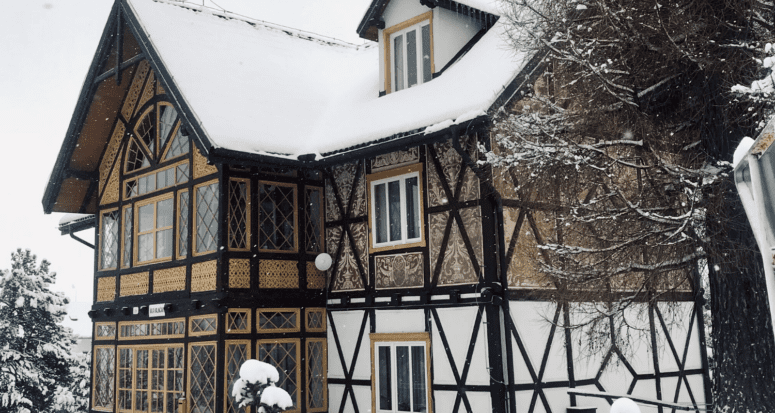7 Tips for Selling an Older Home Like a Fine Wine Aging Gracefully
- Published on
- 8 min read
-
 Valerie Kalfrin, Contributing AuthorClose
Valerie Kalfrin, Contributing AuthorClose Valerie Kalfrin Contributing Author
Valerie Kalfrin Contributing AuthorValerie Kalfrin is a multiple award-winning journalist, film and fiction fan, and creative storyteller with a knack for detailed, engaging stories.
-
 Sam Dadofalza, Associate EditorClose
Sam Dadofalza, Associate EditorClose Sam Dadofalza Associate Editor
Sam Dadofalza Associate EditorSam Dadofalza is an associate editor at HomeLight, where she crafts insightful stories to guide homebuyers and sellers through the intricacies of real estate transactions. She has previously contributed to digital marketing firms and online business publications, honing her skills in creating engaging and informative content.
Remember floppy disks, rotary phones, and Saturday mornings with cartoons on VHS? Just like those throwbacks, older homes carry a charm you can’t replicate: cozy corners, real wood details, and stories in every creak of the floorboards. But selling one? That’s a different kind of challenge, which make home sellers seek out smart, effective tips for selling an older home.
Buyers today often want turnkey homes: move-in ready, open-concept everything, and smart-this-or-that. While vintage charm and architectural character may appeal to some buyers, others may see aging systems, outdated layouts, or the need for renovations as drawbacks. In fact, some might even see the home as more of a project than a place to live.
Don’t worry, your home’s not the only golden oldie on the block. There are other “seniors” in the housing stock. About 26% were built between 1940 and 1969 — and nearly 13% were built in 1939 or earlier, which pushes the 100-year mark. While selling an old home definitely comes with several challenges, with the right prep and a little strategy, you can show buyers the magic behind those time-tested walls.
In this guide, we interviewed top real estate agent Patricia Anderson who has worked for over 20 years serving the Louisiana corridor between Baton Rouge and New Orleans and has encountered her share of old and even historic properties. We’ll help you highlight your home’s charm, tackle its quirks, and get that classic beauty ready for its next owner.
1. Prove you’ve kept up with the maintenance
Any buyer wants to know they’re not inheriting a maintenance headache — and with an older home, that’s a top concern. You may want to hire a home inspector or other specialist before listing so that you can get ahead of any issues that could be deal-breakers. About 42% of buyers who recently purchased new homes said they wanted to avoid renovations and problems with plumbing and electricity, according to the National Association of Realtors (NAR).
Buyers of old houses especially wanted reassurance about these five factors:
- The state of the foundation and basement:
Aside from looking for any cracks and mold, walk around the main floors. See any bowed walls? Long cracks in the paint? Separated siding? You might need a foundation inspection, which can take about two hours. - The age and condition of the roof:
Are there any loose shingles? Leaks? Signs that the roof isn’t level? A roof inspector can check the exterior, as well as the ceilings, walls, and attic. - The age of the plumbing system:
Does your water look cloudy, or does your home have low water pressure? Copper piping has been around for 80 years and is still considered reliable. Lead pipes are a different story — and any house that’s 60 or older could have some faulty connections, even if the whole house doesn’t need a plumbing overhaul. - The safety of the electrical system:
Does your home have grounded outlets? Aluminum or knob-and-tube wiring? An electrical panel that can’t handle WiFi or modern appliances? If your home is 40 years or older (or if you’ve added major new appliances in the past decade), get an electrical system inspection and consider upgrading your home’s wiring. - The size of your utility bills:
Your real estate agent will want to see your past utility bills before listing — and prospective buyers are bound to ask about the cost of heating and air conditioning, for starters. How old is your furnace or HVAC system? Are the windows and doors insulated? The Architectural Collection at Andersen Windows & Doors offers up-to-date interpretations of traditional styles, from Cape Cod to Queen Anne.
If you’ve arranged for a prelisting inspection, a home inspection before putting the house up for sale, you’ll have time to fix any serious issues that a buyer’s inspection would uncover, putting you in a better position for negotiations.
What’s more, collecting receipts and warranties for new appliances, repairs, and renovations for a home appraiser also helps show an inspector — and prospective buyers — that your house might be lived-in but it’s been well-maintained.
2. Price it right for today’s market
Even if your home has vintage charm, pricing it like it’s frozen in time won’t do you any favors. Look at recent comparable sales in your area, especially for homes with similar age and condition.
Be honest about what updates buyers might need to make, and work with an agent who knows how to find that sweet spot between charm and comps. A competitive price helps attract serious buyers without letting your home sit too long.
3. Market its unique features
One selling point of an older house is that its architecture doesn’t resemble current styles. Buyers drawn to these types of properties love the uniqueness and the quirky features, like “witch windows” angled parallel to the roof line or milk doors, small pass-throughs for a 19th-century milkman to leave the homeowners a daily supply of dairy products.
“I’ve had buyers over the years that specifically would tell me, ‘I don’t want to see anything modern.’ They like the nostalgia of the history [it has] and the old feel of it. They like the idea that the original old floors are in it and they still creak. ‘Oh, my gosh, my grandmother had a stove like that!’… or ‘if I open this little secret door…’” Anderson said.
If your home has some historic value, whether through past ownership by a notable figure, ties to a significant event, or unique architectural or construction features, all the better.
If your home happens to have a cold closet — an unrefrigerated closet that nonetheless kept meats, cheese, and veggies cool — that’s a perk for a home chef, a wine connoisseur, or someone with computer equipment that needs to stay chill.
Some 1920s and 1930s houses have a phone niche, a recessed nook and shelf in the wall for the wired phones and phone books of the day, which you can use for display or storage. And considering that some builders install laundry chutes by request nowadays, any home with one of those has a step above the competition.
4. Ditch dated decor
While you’ll want to emphasize your home’s charming architectural touches, you don’t want buyers to feel like they’re entering a time machine. You might not notice your popcorn ceilings or floral wallpaper in the bathroom anymore, but those types of things leap out at buyers.
Small updates like a coat of paint and new hardware on kitchen cabinets and drawers can help your home look fresh. So can energy-efficient fixtures like LED lighting. Try replacing your bulbs with LED ones, like these 60-watt equivalent EcoSmart bulbs that mimic daylight — and help rooms show well in photographs for online listings.
5. Stage to impress
Anderson recalled selling a charming, 100-plus-year-old home a few years ago. It had four bedrooms, three baths, and was ‘lovingly restored’ on the inside. But even if yours hasn’t undergone major improvements, you can stage it so that it has broad appeal.
Pare down the knickknacks and furniture so the house doesn’t look cluttered, and show off any natural materials, including any hardwood floors.
For an older home that might be more compartmentalized instead of having an open layout, see if you can designate the function or versatility of certain rooms, such as a home office that doubles as a hobby space or a den for movie marathons.
Don’t forget to enhance any architectural features, such as using paint to highlight crown molding or wainscoting, a ceiling medallion in an entryway, or a fireplace mantel or ornamental fireplace insert.
6. Highlight the space you get for the money
Remember the typical home purchased in 2024 was 1,900 square feet, had three bedrooms and two bathrooms, and was bult in 1994. About 31% of buyers who purchased previously owned homes most often considered them a better overall value.
Compared to new construction, an older home might have more square footage or a larger lot size, proving more desirable for buyers. If you have a deck, garden, patio, or porch, that’s livable outdoor space to promote, right down to the curb appeal. How about a striking view from the living room? That’s a standout focal point to underscore for buyers.
7. Consider a cash offer from an investor
Sometimes, skipping the stress is the best move. If your old home is in poor condition needing major repairs or you just want a faster sale, a cash offer could be the way to go. Consider working with investors, such as house flippers, buy-and-hold investors, and iBuyers, as you can sell to them as-is, meaning no upgrades, open houses, or long waits.
HomeLight’s Simple Sale platform provides a no-obligation cash offer within 24 hours of submitting property information. You can close in as little as 10 days, allowing you to bypass all the usual hassles of selling an old home. Selling to an investor isn’t for everyone, but for the right seller, it can be a total game changer.
Make history with a successful home sale
For buyers unable to see the potential because they had their mind set on certain things like an open floor plan or granite countertops, Anderson said she’ll discuss just what those desirables mean.
Perhaps a parent needs to hear they can poke their head around the corner to check on the kids instead of looking across the main living area, or with all the square footage they’ll have, they can afford to upgrade those countertops easily. “Does the house check off more boxes than it doesn’t?” she said.
Before selling your older home, make a list of everything you would have wanted to adjust in the house if you were to stay. “I try to get the sellers to think like a buyer; then they can be objective and take the emotion out of it,” Anderson said.
An older house often has “great bones,” she added. It just needs a little dressing up. Highlight your home’s charm and attract the right buyers by partnering with an experienced real estate professional. Our Agent Match tool analyzes over 27 million transactions and thousands of reviews to connect you with the top performers in your area. Consult a leading real estate agent today.
Header Image Source: (Gabriela Slovak / Unsplash)








